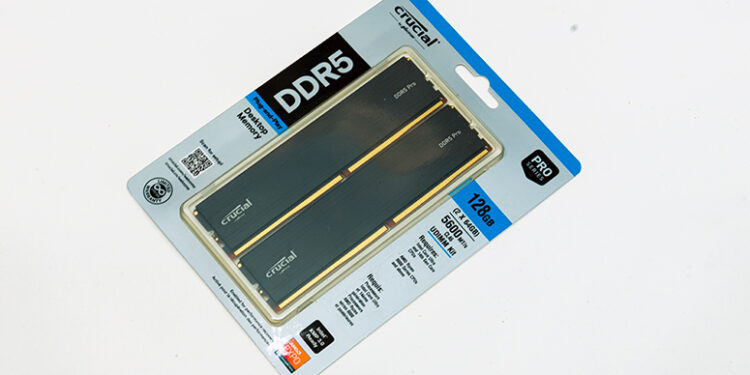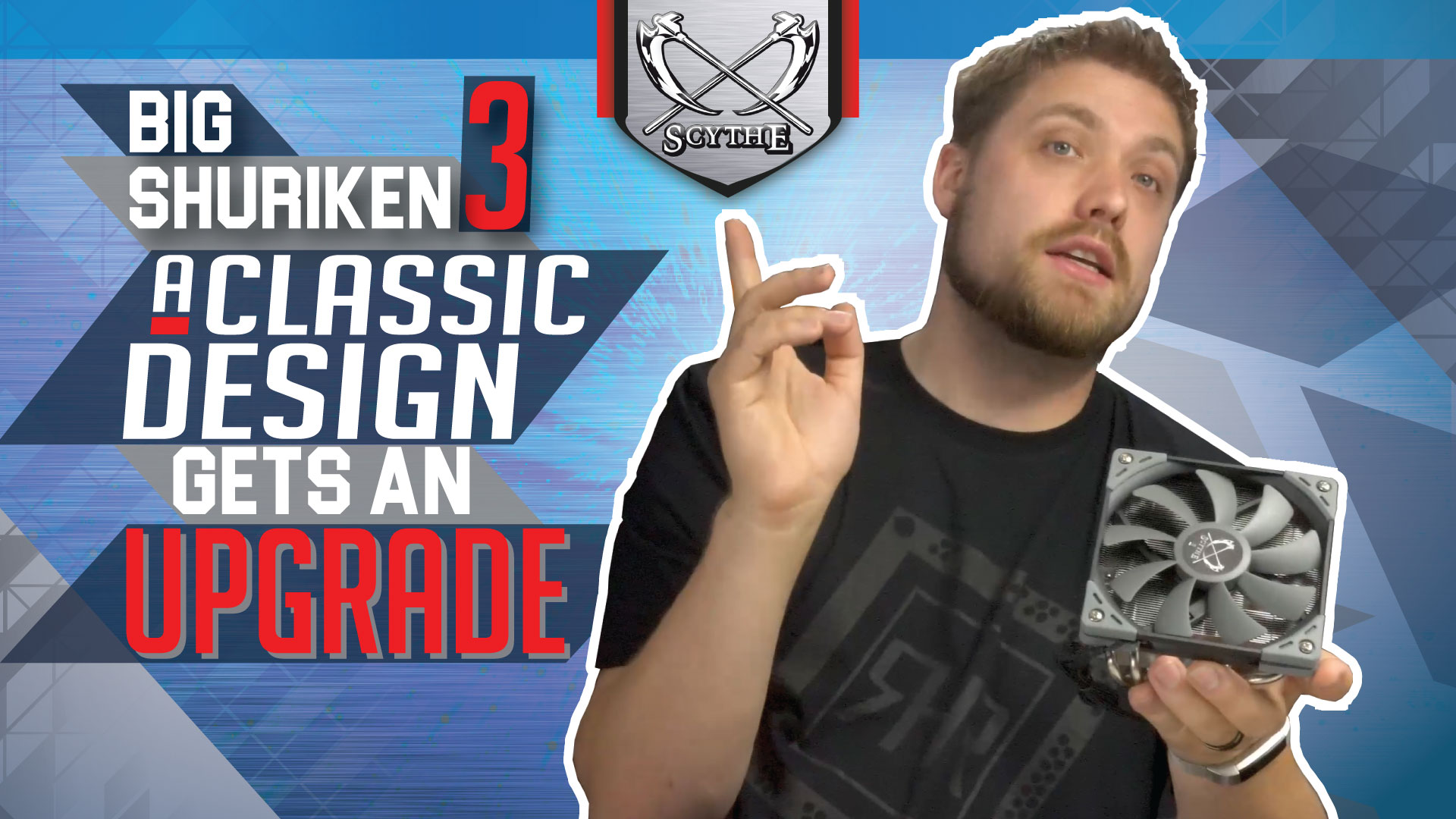Final Score: 94%
With rumors swirling about Intel doubling (or even more) the core count in their next generation CPU, and AMD pretty much promising to increase theirs by 50 percent, it should come as no surprise that DDR5 RAM manufacturers are finally starting to take large capacity dual DIMMS kits’ performance seriously. Hell, forget about next-generation CPUs, today’s generation of CPUs are arguably RAM-starved. This is a well-known fact and yet up until now 96GB (2x48GB) was about as big as one could get before crossing that invisible line from PITA into PAIN land… as DDR5 64GBx2 kits are notorious for two things. Being slow, and finicky compared to 48GBx2 kits. Which in turn are notorious for being finicky compared to 32GBx2 (which in turn… well you get the idea).
That known issue with mega-capacity kits of DDR5 is obviously a problem Crucial set out to solve when they decided to add 128GB kits into their “Pro” lineup… and that is what they have done. They have created a kit of RAM that offers both high capacity and ease of use. So if you do not care about the how or the why know this: these 64Gx2 kits are worthy of their Pro moniker. They are blazing fast for their niche. They are reasonably priced. They even offer darn near similar levels of ‘ease of use’ for professional system builders as the smaller Pro options. So if you need a big boi RAM kit this is the one you should be putting on your shortlist.
With all that said, condensing all this kit has to offer into a fortune cookie nugget of wisdom is doing a disservice to both buyers and to Crucial. The Crucial DDR5-5600 128GB kit(s) marks a milestone for DDR5. One where finally buyers can get both capacity and performance. Sure ‘DDR5-5600’ is not as fast as what the small 16 and 32GB kits can hit. Sure DDR5-5600 is slower than what even Crucial’s own DDR5 Pro 64GB kits can routinely offer. Who cares?! None of that is all that pertinent to the intended consumer of these mega-capacity kits. It also certainly won’t matter to buyers of next-gen CPUs when their existing ‘fast’ but small kit results in noticeable “RAM starvation” where suddenly each core is spending more time waiting for the storage bus than it is crunching data. More importantly, it certainly is not all that important for professionals who have been craving 128GB offerings that are easy to work, relatively fast, and don’t cost a kidney.
So let’s break down the arguments for and against this next generation of truly professional memory kit(s). Up until now, DDR5-4800 was pretty much the safe bet for 64GBx2 kits. Maybe you could hit DDR5-5200. Maybe. Now one can hit 5600 and still break the 100GB barrier. Yes. 5600 is lower than 6000, or 6400. But it’s not all that much, nor anywhere close to being as big a difference as the “numbers go up” frequencies infer. For the Intel system, DDR5-5600 vs DDR5-6400 is not that big a difference in the real world. In fact, for most professional-orientated scenarios it is a rounding error’s worth of difference. Only PC Gaming enthusiasts and the occasional home user will care about the differences in their non-professional workflow patterns. This is fine, as neither need nor even desire 128GB of memory to handle their system’s memory requirements. Making any kit of 128GB of memory a waste of resources.
On AMD things are not quite as rosy… as the faster the RAM the faster the inter-core bus operates at. Barring a few edge cases, that too is not overly worrisome as AMD says DDR5-6000 is the sweet spot for their processors and the difference between the Infinity Fabric running at 2800MHz vs 3000MHz is not ‘extreme’. Noticeable, but not extreme. In fact, for every edge case where a bit more speed matters, there are at least just as many (and arguably more) cases where being able to keep 128GB of data on the fast memory bus will net a noticeable performance improvement.
The only issue any professional will have on the ‘speed’ front is with the timings… as CL46 is… oof… slow. Once again we think CAS latency timing impact on real-world performance is a bit overblown. So while it is a legitimate concern, and lower is always better (assuming the same memory frequencies)… its not a night and day difference. Somewhat counteracting this legitimate concern is the fact that with a bit of TLC, you can dial this impact down to a mild roar.
As such, when taken as a whole, the only question one has to answer in order to know if this kit is right for a build or not is simple: will the workflow’s overall performance be impacted more by RAM latency or by total RAM capacity? Only you know the answer to that question. For us, we fall firmly into the “there is no replacement for displacement” end of the spectrum and will not only gladly spend the kind of coin Crucial wants for this kit… but do so with a smile on our faces as we consider this kit a phenomenal value. One that hopefully is the start of a new day. One where in the next refresh we see 128GB kits hit the memory sweet spot for both AMD and Intel. Until that day is today this is about as good a mega-capacity kit as you are going to find. So if you want… need… or even just desire your systemto have access to big boi memory capacity the Crucial Pro DDR5-5600 options are pretty much tailor-made for you. But it. Use it. Love it… and figure out how to justify its MSRP to your significant other later.


The Review
Crucial’s DDR5-5600 128GB Pro kit offers a rare combo of high capacity and solid performance, solving common issues with large RAM kits. It’s a great pick for professionals and next-gen CPUs needing more memory, not just speed.










